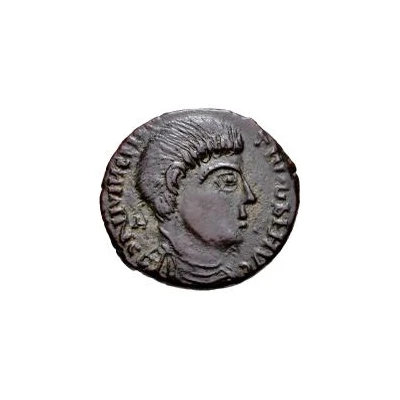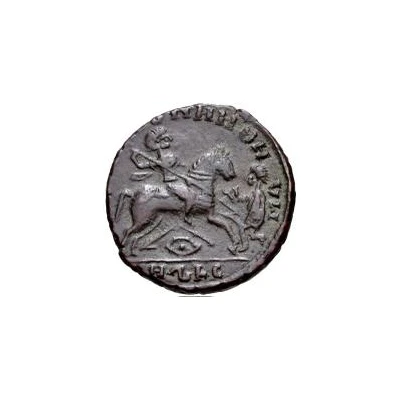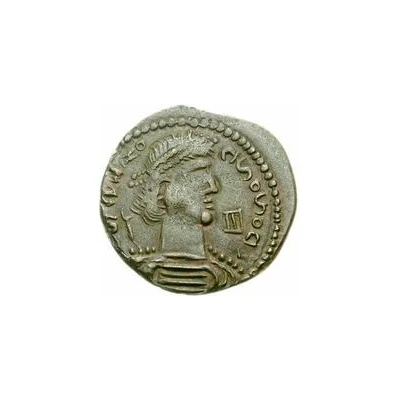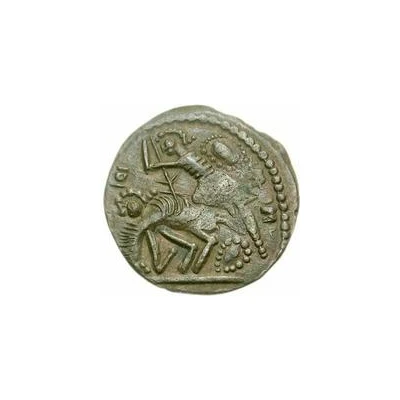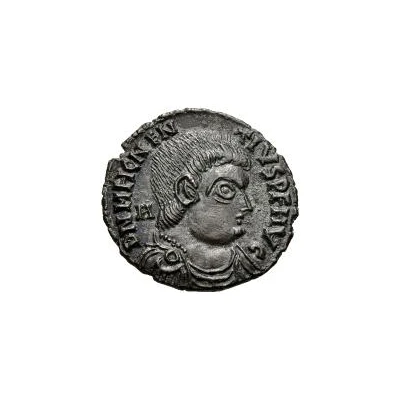
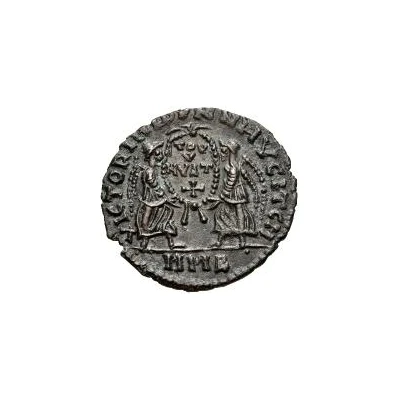

© Classical Numismatic Group, Inc.
Æ In the name of Magnentius
| Bronze | 3.08 g | 21 mm |
| Issuer | Uncertain Germanic tribes |
|---|---|
| Type | Standard circulation coin |
| Years | 350-425 |
| Currency | Solidus (circa 301-750) |
| Composition | Bronze |
| Weight | 3.08 g |
| Diameter | 21 mm |
| Shape | Round (irregular) |
| Technique | Hammered |
| Demonetized | Yes |
| Updated | 2024-10-04 |
| Numista | N#153982 |
|---|---|
| Rarity index | 100% |
Reverse
Two winged Victories holding wreath containing stacked legend, all surrounded by legend.
Script: Latin
Lettering:
VICTORIA DD NN HVC IT CH
VOT
V
MVLT
X
HWB
Translation:
Victoria Dominus Noster Augustus Et Caesar / Votis Quinquennalibus Multis Decennalibus
Victory to our Lord, August, and Caesar / Vows for the fifth anniversary and more for the tenth
Edge
Plain
Comment
This coin is said to be struck from the mid-4th to early-5th centuries. With the prototypes for these coins struck in Ambianum/Amiens, and with those types being first struck in 350, that is the most-likely beginning date for this entire type of AE struck by an Uncertain Germanic Tribe.The denominations of bronze coins that are unknown to numismatists are referred to as Æ (AE), followed by the coin's diameter. The Æ part simply means the coin is made of a base alloy, and because the diameter of these coins is never exactly as intended, different numbers can appear after the Æ for the same type.
The exact lettering of the surrounding legend may vary.
Interesting fact
One interesting fact about this coin is that it was issued during the reign of Magnentius, a usurper of the Western Roman Empire, and features an image of his name and title on one side, while the other side features a depiction of a Roman goddess, possibly Victory or Abundance. Despite being issued by a usurper, the coin was still widely accepted and circulated among the Germanic tribes in the region. This highlights the complex political and economic dynamics of the time, where coins issued by rival factions and rulers could still be used as currency, reflecting the fluid nature of power and influence during the decline of the Roman Empire.
